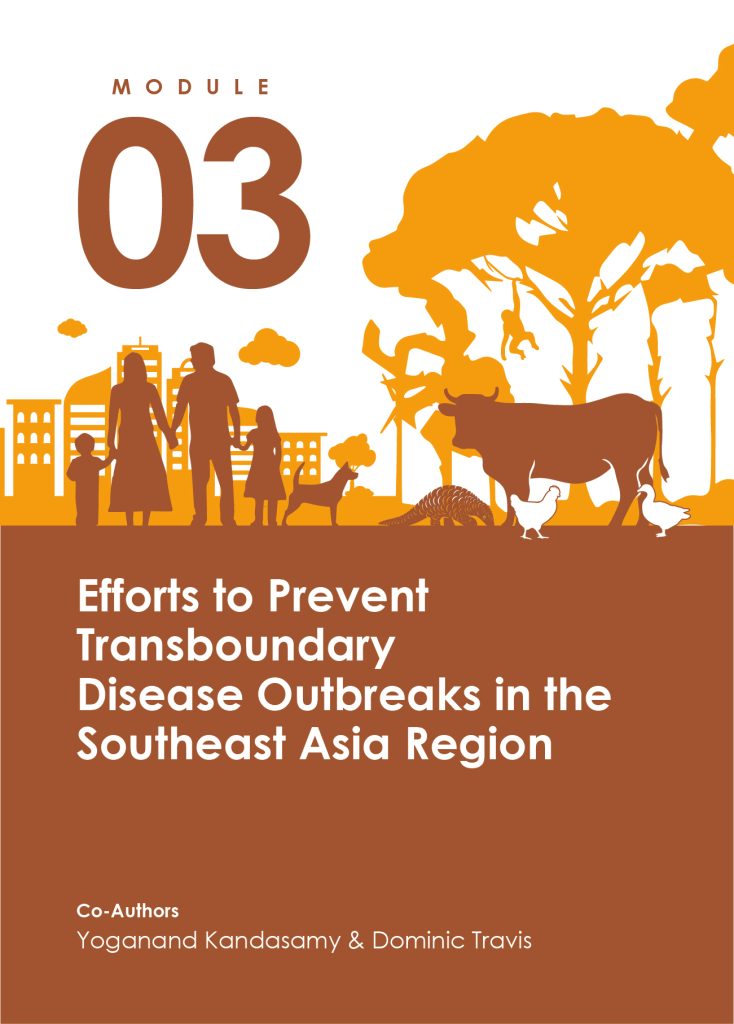

Ways to Improve Transboundary Collaboration
- Continued harmonization of language and methods across discipline (including wildlife), countries and regions to increase teamwork for prevention and response.
- Continued connection of communities to national and regional strategies and networks to foster more participatory wildlife monitoring and health surveillance.
- Focus on fostering development and implementation of both high-level standards for, and community-based examples of bio-social models of wildlife trade risk assessment and management.
Efforts to Prevent Transboundary Outbreaks
This module provides insights into the transformative potential of transboundary approaches to counter zoonotic spillover of high-consequence pathogens in the region. Recognizing that the implementation of control points cannot be achieved by a single discipline, ministry, or agency, this module emphasizes the need for collaborative efforts across the entire wild and domestic animal supply chain. Many global agreements and processes have been created to support domestic animal trade and minimize disease risk, while very few exist for wildlife. Wildlife trade often creates favorable conditions for the emergence and transmission of zoonotic diseases, leading to increased risks of epidemics at both regional and global levels. The module details solutions to address the interconnected goals of reducing biodiversity loss and sustaining public health. Key sections include the development of a comprehensive understanding of the concept of “transboundary” in the context of One Health, highlighting existing successful transboundary collaboration within the region, conceptualizing wildlife trade as a transboundary system in the region and advocating for a transboundary approach to regulate wildlife trade.
Contents
- Examination of the concept of ”transboundary“ and its application to spillover risk reduction.
- Description of existing cases of transboundary collaboration to prevent spillover.
- Conceptualization of the wildlife trade as a transboundary system in the region and an examination of attempts to understand and regulate the system.
- Advocates for a transboundary approach to wildlife trade in Southeast Asia.
Project Management
The project, Countering Zoonotic Spillover of High Consequence Pathogens (HCP), is conducted in collaboration the US National Academies of Sciences, Engineering, and Medicine (NASEM).
The project is locally managed by Project Officer, Hazel Yean Ru Ann, who is co-located with the INGSA-Asia office at Sunway University, Malaysia.
If you or your organisation are involved with the live animal supply chain in Asia, or have expertise in zoonosis, we encourage you to get in touch with the Project Officer and help us to operationalise and disseminate best practice in the field.

